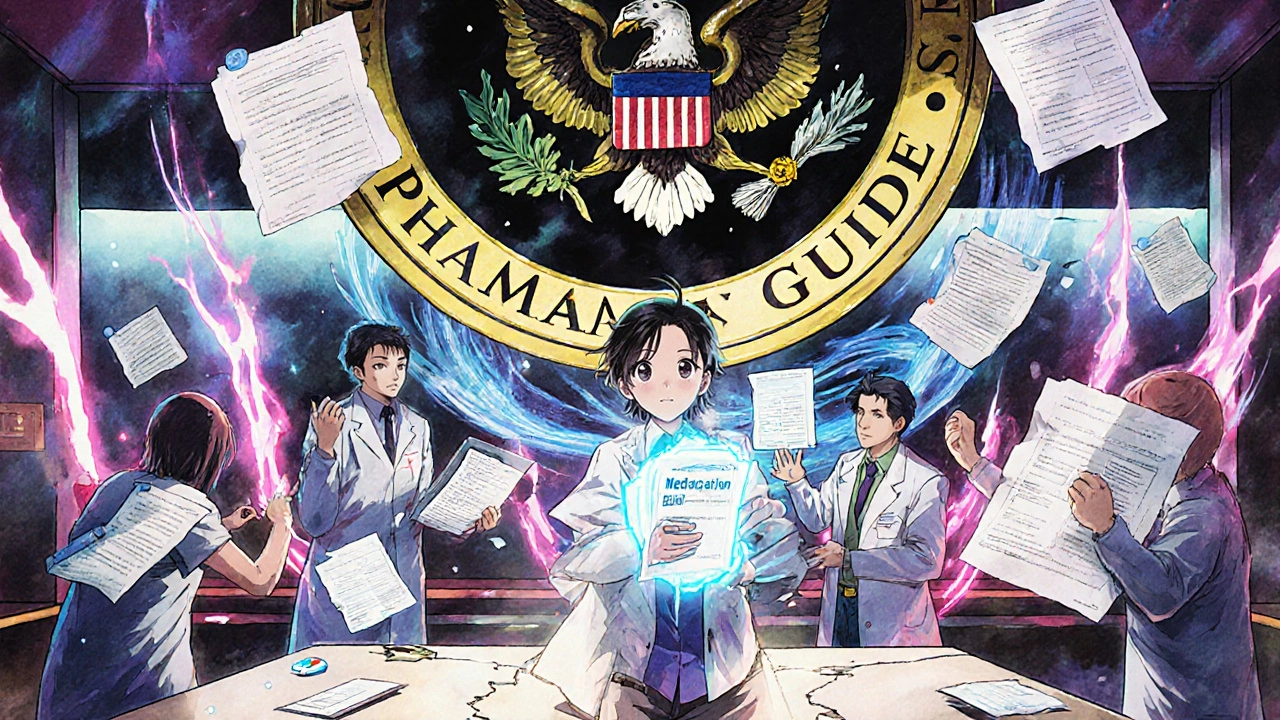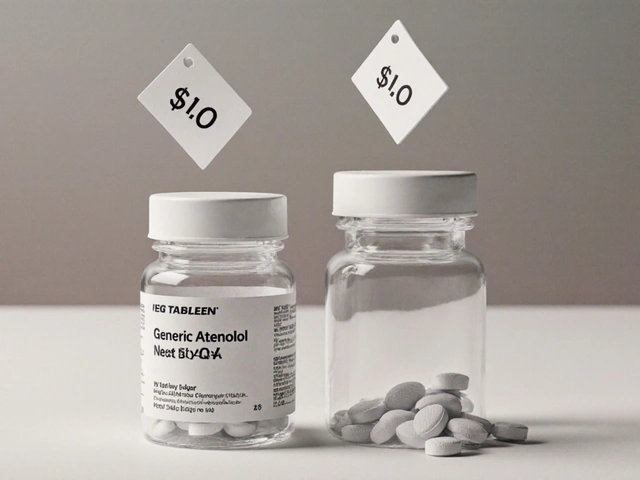REMS Effectiveness Estimator
Estimate how effectively REMS programs reduce serious adverse events based on implementation quality. The FDA reports only 30% of REMS programs have data showing improved patient outcomes.
When a drug carries a serious risk-like sudden brain swelling, life-threatening infections, or fatal birth defects-how do you let patients use it without putting them in danger? That’s the exact problem the FDA solved with REMS, or Risk Evaluation and Mitigation Strategies. Since 2007, REMS has been the agency’s go-to tool to approve high-risk medications that otherwise wouldn’t make it to market. But here’s the real question: do these programs actually change what happens to patients, or are they just paperwork with a fancy name?
What REMS Really Is (And What It Isn’t)
REMS isn’t just a warning label. It’s a legally enforced system with teeth. If a drug has a risk so severe that standard labeling won’t cut it-like the 0.8% chance of passing out and going into delirium after an injection of Zyprexa Relprevv-the FDA can require a REMS program. As of October 2023, 72 REMS programs cover about 150 drugs. That’s less than 1% of all medications, but those drugs make up $120 billion in annual U.S. sales.
REMS isn’t one-size-fits-all. It has three main parts:
- Medication Guides: Printed handouts patients get with their prescriptions. 45 REMS programs require these. Manufacturers must prove they’re handed out 100% of the time.
- Communication Plans: Letters or training for doctors. 38 REMS programs require these, with providers needing to show at least 80% awareness of the risks.
- Elements to Assure Safe Use (ETASU): The strictest layer. Only 22 REMS have this. It means prescribers must be certified, pharmacies need special equipment, and patients might have to wait 3 hours after treatment. For example, Tysabri’s REMS requires a JC virus test before every infusion to avoid a rare but deadly brain infection.
Before REMS, the FDA used voluntary RiskMAPs. Those failed. Compliance? Only 35-45%. REMS changed that. Now, compliance hits 75-95%. That’s because manufacturers face fines up to $250,000 per violation. It’s not a suggestion. It’s the law.
Do REMS Programs Actually Save Lives?
This is where things get messy. The FDA says REMS works because it lets life-saving drugs reach patients who’d otherwise be denied. Between 2018 and 2022, 12 new drugs were approved only because of their REMS programs. That includes treatments for rare cancers and autoimmune diseases.
But here’s the catch: most REMS evaluations don’t measure whether patients live longer, have fewer hospital stays, or avoid serious side effects. They measure if the guide was handed out. If the doctor completed the training. If the pharmacy registered on the portal.
A 2020 FDA report admitted that only 30% of REMS programs had enough data to prove they improved real-world outcomes. The rest? They track process, not results. A 2021 JAMA commentary called this a “measurement gap.” Dr. Peter Lurie, a former FDA official, put it bluntly: “The evidence for REMS actually changing clinical outcomes remains thin.”
There are exceptions. A multiple sclerosis clinic in Ohio saw a 30% drop in serious adverse events after enforcing the Tysabri REMS. That’s real. That’s meaningful. But those cases are rare. Most REMS programs still rely on surveys, checklists, and compliance reports-not patient data.
The Hidden Cost: Delays, Confusion, and Abandoned Prescriptions
REMS isn’t just bureaucratic. It’s burdensome. A 2022 AMA survey of 1,200 doctors found 68% said REMS caused treatment delays. For oncologists? That number jumped to 82%. One doctor told me he stopped prescribing a leukemia drug because it required three separate registrations across three different portals. Each one took 45 minutes. He didn’t have time.
Specialty pharmacies report similar issues. On average, 57% of REMS drugs require patients to register in three or more systems. Setting up one patient takes 4.2 hours. That’s not just frustrating-it’s dangerous. A 2023 Cancer Support Community survey found 28% of cancer patients had treatment interrupted because of REMS requirements. One woman missed her second infusion because her pharmacy hadn’t finished paperwork. Her tumor grew.
Manufacturers pay too. The average cost to launch a REMS? $18.7 million in the first year. $5.3 million every year after. For a small biotech, that’s a dealbreaker. Some drugs never get made because the REMS burden is too high.
Is REMS Evolving? Yes. But Too Slowly.
The FDA knows this. In 2022, they updated their assessment framework. Now, they don’t just want to know if a doctor completed training. They want to know if fewer patients had strokes, infections, or overdoses. Ten REMS programs are already shifting to outcome-based metrics.
The REMS@FDA portal, launched in 2020, now pulls together 63% of REMS programs into one login. Prescriber setup time dropped from 45 minutes to 22. That’s progress.
By 2026, the FDA wants 90% of REMS programs integrated into electronic health records. That means when a doctor prescribes a REMS drug, the system automatically checks if the patient’s test is up to date, if the pharmacy is certified, and if the guide was given. No more manual forms. No more delays.
And there’s talk of “REMS Lite”-a lighter version for drugs with lower risk. Imagine a simple alert in the EHR for a medication that can cause liver damage. No certification. No waiting rooms. Just a prompt. That could expand REMS to 50-75 more drugs by 2027.

What’s Next for REMS?
The future of REMS isn’t about more paperwork. It’s about smarter data. The FDA’s 2023-2027 plan allocates $15 million a year to study how REMS affects real patient outcomes. They’re partnering with health systems like Mayo Clinic and Kaiser Permanente to track hospitalizations, ER visits, and survival rates-not just compliance forms.
By 2028, Deloitte predicts 75% of new REMS programs will require direct clinical outcome data. That’s a game-changer. It means REMS will stop being a compliance checklist and become a tool to actually improve safety.
But until then, the system remains a paradox. It enables life-saving drugs to reach patients who need them. But it also delays care, frustrates providers, and costs billions-all while proving little about whether those patients are truly safer.
Bottom Line: REMS Works, But Not the Way We Think
REMS doesn’t eliminate risk. It manages it. And right now, it’s better at managing paperwork than preventing harm. The tools are there-Medication Guides, provider training, certified pharmacies. But the metrics? They’re still stuck in 2008.
The real question isn’t whether REMS changes outcomes. It’s whether we’re measuring the right things. If the goal is to keep patients safe, then we need to stop counting how many guides were handed out-and start counting how many strokes, infections, and deaths were avoided.
Until then, REMS is a necessary tool with a broken compass. It gets drugs to market. But it doesn’t yet prove it saves lives.
Do all high-risk drugs require a REMS program?
No. Only drugs with serious, preventable risks that can’t be managed with standard warnings need a REMS. Out of over 20,000 approved medications in the U.S., only about 150 are covered by the 72 active REMS programs. Most are for cancer, neurology, and immunology drugs with risks like organ failure, severe infections, or birth defects.
Can patients refuse to follow REMS requirements?
Patients can’t legally refuse to follow REMS rules if they want the medication. For example, if a drug requires a special test before each dose, the pharmacy won’t fill the prescription without proof of the test. It’s not optional-it’s built into the system. But patients can choose not to take the drug at all.
Why do some doctors refuse to prescribe REMS drugs?
Many doctors say REMS is too time-consuming. Some require up to 16 hours of training, multiple registrations, and complex documentation. One 2022 survey found 45% of physicians had stopped prescribing a REMS drug because the process was too hard. For oncologists and neurologists, who often treat patients with complex needs, the administrative load can mean delaying or skipping treatment entirely.
Are REMS programs effective for opioid safety?
Yes, but with limits. Since 2018, the FDA has added 7 REMS programs for opioid painkillers, requiring prescriber education and patient counseling. Early data shows these programs increased awareness and reduced inappropriate prescribing. But they haven’t yet shown a clear drop in overdose deaths. The challenge is that opioid misuse often happens outside the clinic-so REMS alone can’t fix the problem.
What’s the difference between a REMS Medication Guide and a regular patient leaflet?
Regular patient leaflets are standard for almost all prescription drugs. They’re general warnings. REMS Medication Guides are FDA-approved, legally required documents for high-risk drugs. They’re more detailed, targeted to specific dangers, and manufacturers must prove they’re distributed to every patient. Failure to distribute them can result in fines.









Been working with REMS drugs in oncology for 8 years and honestly the paperwork is insane. I had a patient miss her third infusion because the pharmacy hadn’t updated her portal status. She cried. I cried. The system isn’t broken-it’s just stuck in 2012.
i just wish the fda would stop treating doctors like they’re idiots and patients like they’re children. if you give people the info they need to make decisions, they usually do the right thing. all this certification and registration just makes everyone miserable
Let me get this straight-we’ve got a system that costs billions, slows down life-saving treatments, and still can’t prove it saves lives? This isn’t regulation, it’s performance art. The FDA is more concerned with checking boxes than saving bodies. I’m not mad, I’m just disappointed.
From a pharmacovigilance standpoint, REMS represents a paradigm shift from reactive surveillance to proactive risk mitigation. However, the current operational metrics remain largely process-oriented, lacking longitudinal clinical outcome integration. The absence of real-world evidence capture via EHR interoperability severely limits causal inference.
Why do we even bother? In India we just give the patient a pamphlet and tell them to Google it. Works better than all this bureaucracy. Stop wasting money on portals and start paying doctors more.
I know it sounds frustrating but imagine being the patient who got that drug because REMS existed. That one person who lived because their doctor didn’t miss the JC virus test. That’s the story they don’t tell you. It’s messy, but it’s saving someone.
Oh, so we’re just supposed to believe that a $120 billion industry, backed by regulatory machinery designed to appease public fear, is somehow altruistic? No. REMS is the pharmaceutical industry’s legal shield wrapped in the skin of patient safety. It’s not about care-it’s about liability insurance with a side of PR. We’ve turned medicine into a compliance theater, and the patients? They’re the audience.
I get the frustration, but I’ve seen REMS work. My cousin has MS and takes Tysabri. Without that JC virus test before every infusion, she wouldn’t be here. It’s not perfect, but sometimes the system works even when it’s clunky.
It’s not about whether REMS saves lives-it’s about whether it creates the illusion of safety. The metrics are performative. The outcomes are unmeasured. The cost is externalized onto providers and patients. This isn’t innovation. It’s institutionalized inertia dressed up as progress.
my sister had to wait 3 weeks for her cancer med because the pharmacy couldn’t get the certification done. by then the tumor had grown. the system failed her. not the doctors. not the drug. the system
the whole thing is just too much. i get the need for safety but why does every single thing have to be a 5 step process with 3 logins? i just want to give my patient their medicine without spending half my day on paperwork
As a physician in India, I have observed that REMS-like systems are often perceived as Western overregulation. In resource-limited settings, we prioritize access over administrative rigor. Yet, I also recognize that for high-risk therapies, structured safeguards are non-negotiable. Perhaps the solution lies not in replication, but in contextual adaptation-lightweight, culturally attuned risk mitigation, not bureaucratic duplication.
Stop complaining about the paperwork. If you’re prescribing a drug that can kill someone in 48 hours, you better have a system. The fact that you’re frustrated means you care. Now fix it. Push for EHR integration. Demand outcome tracking. Don’t just rant-lead.
They call it "risk mitigation" but it’s really risk avoidance. The FDA doesn’t want to be blamed when someone dies, so they make doctors jump through hoops. Meanwhile, the real problem-patients not understanding their meds, or skipping tests because they’re overwhelmed-is ignored. It’s not about safety. It’s about covering their own backs.
the ehr integration by 2026 sounds good but what about the small clinics that still use paper? or patients without internet? or the ones who dont speak english? rems is great in theory but it forgets people arent all the same